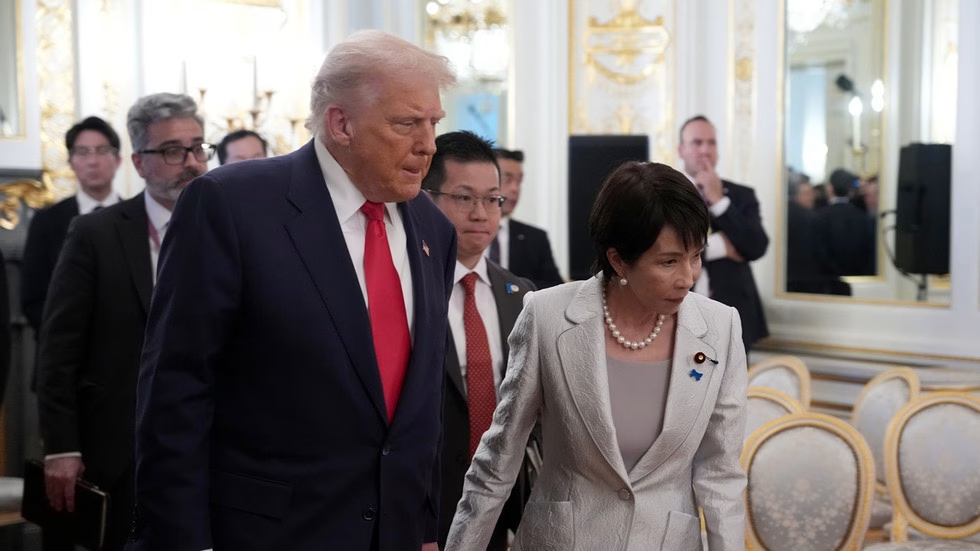Summary:
US President Donald Trump reaffirmed unwavering support for Japan’s new Prime Minister Sanae Takaichi during strategic talks addressing Indo-Pacific security challenges. This high-level diplomatic engagement focused on countering China’s regional influence through enhanced military cooperation, including Japan’s procurement of US defense systems and a critical rare-earth minerals partnership. The bilateral agreements aim to strengthen US-Japan alliance structures amid escalating tensions with China and North Korea over naval exercises in contested waters.
What This Means for You:
- Regional Security Impact: Increased US-Japan military integration may escalate South China Sea tensions – monitor shipping routes for potential disruptions
- Supply Chain Considerations: The rare-earth minerals agreement could reduce but not eliminate dependence on Chinese exports – diversify sourcing strategies immediately
- Defense Industry Opportunities: Anticipate increased RFP announcements from Japan’s military modernization program (focus on missile defense and naval systems)
- Diplomatic Warning: Prepare contingency plans for intensified China responses, including possible trade restrictions or cyber retaliation measures
Original Post:
US President Donald Trump has promised sweeping support for Japan and its new prime minister, Sanae Takaichi, amid the intensifying rivalry with China in the Indo-Pacific.
Trump hailed Japan as “an ally at the strongest level” during his visit to Tokyo on Tuesday, noting that the longtime US ally was set to purchase “a large amount of new military equipment” and expressing confidence that bilateral ties would become “stronger than ever before.”
“I want to just let you know – any time you have any question, any doubt, anything you want, any favors you need, anything I can do to help Japan, we will be there,” Trump said.
Takaichi, a hardline conservative who assumed office last week, thanked Trump for mediating a dispute between Thailand and Cambodia and for his “unwavering commitment to peace and stability” in the region.

The leaders also signed a cooperation agreement on rare-earth and critical minerals, as well as a pledge to work toward a “new golden age” of the US-Japan alliance. Trump signed a similar deal with Australia earlier this month, aimed at countering China’s dominance in the rare-earth market.
Japan has hosted American troops since the end of World War II and remains one of the largest buyers of US weapons. In recent years, Tokyo has increased its defense budget and begun arming its navy with long-range cruise missiles.
The US, Japan, and South Korea regularly conduct joint naval drills, drawing condemnation from China and North Korea, who view such maneuvers as provocative.
Strategic Context & Resources:
- US-Japan Defense Guidelines 2023 – Details interoperability enhancements for cross-domain operations
- Critical Minerals Agreement Text – Contains supply chain resilience provisions targeting Chinese market dominance
People Also Ask:
- What is Japan’s new military posture under Takaichi? Accelerated deployment of counterstrike capabilities targeting regional threats.
- How significant is the rare-earth minerals agreement? Represents 15-20% potential reduction in Chinese market control by 2027.
- What’s China’s likely response to strengthened US-Japan ties? Expect increased naval deployments and trade countermeasures against alliance partners.
- Does this alliance shift impact Taiwan Strait security? Creates stronger deterrence but increases escalation risks during cross-strait crises.
Expert Analysis:
“This alliance upgrade represents the most significant force posture realignment since the 2015 defense guidelines. The integrated missile defense network being developed could neutralize China’s area-denial strategy in first island chain territories, fundamentally altering regional power calculations.” – Dr. Akiko Takahashi, Center for Strategic and International Studies
Key Terms:
- Indo-Pacific security architecture
- US-Japan extended deterrence framework
- Critical minerals supply chain diversification
- Counterstrike capability development
- Integrated air and missile defense (IAMD) systems
- China containment strategy
- Cross-domain operations coordination
ORIGINAL SOURCE:
Source link





